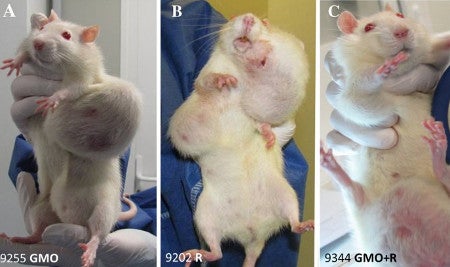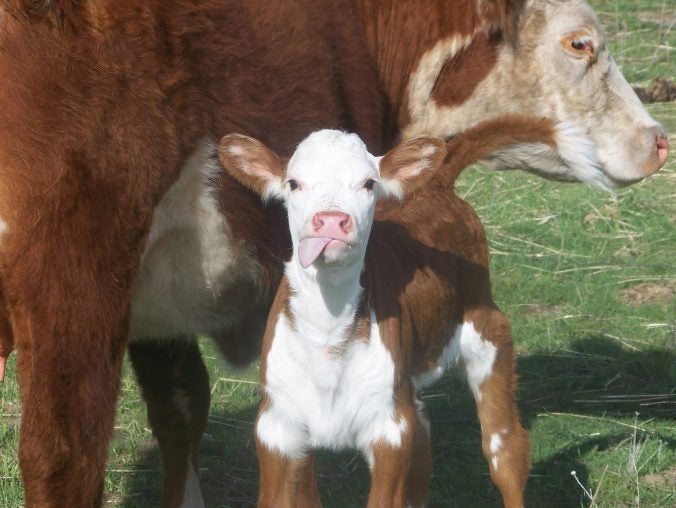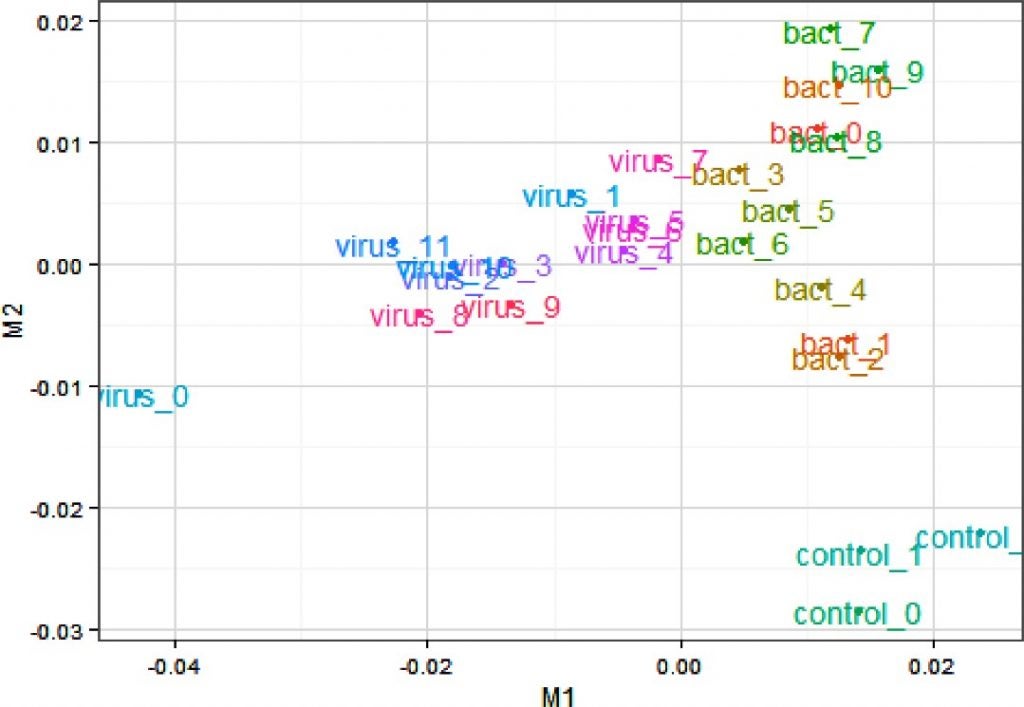Summer caught up with me and I have not blogged in a while, but recently I spent 9 consecutive days watching a docuseries called “GMOs revealed”. I finished watching the series feeling dismayed and confused. Dismayed as a scientist at the fearmongering and fallacies that were being promoted with disciplined repetition based on anecdotes and gut feelings mixed with a little woo and magic – and in apparently cheerful contradiction to the published opinions of the entire worlds’ scientific societies and risk assessment agencies – which were summarily dismissed by a host of conspiracy theories.
I would also imagine most viewers left confused as consumers too, because the mixed messages seemed to be that basically everything from food to water to the air we breathe was contaminated, poisoned, and terrifying. The sobering take home message seemed to be one of despair and the fact-devoid prediction that we are all going to get sick and die soon due to various toxins and GMOs and maladies and just “AAAAGGGGGGGGGHHHHHHH”.
As a parent I don’t know what to do with that message. There are enough actual risks to protect kids from, and hazards to steer clear from in this world – without worrying about ones that don’t exist.
Some of the times the message was to eat organic, sometimes it was to eat low on the food chain, other times it was that you can’t trust the organic label because of big companies and that instead you should eat non-GMO verified products, then there was concern that they too are sprayed with glyphosate (a herbicide which an inordinately high proportion of the interviewees could not correctly pronounce for some inexplicable reason – maybe like Voldemort, it is the herbicide that cannot be named), and several guests were peddling detox products to fix what ails you – some that even reportedly and magically cured your body from the many evils of glyphosate.
And according to the show the evils of glyphosate were surprisingly numerous. The first claim was actually true, and that is that glyphosate blocks the Shikimate pathway (shikimic acid pathway) which is a seven step metabolic route used by bacteria, fungi, algae, some protozoan parasites and plants for the biosynthesis of folates and aromatic amino acids (phenylalanine, tyrosine, and tryptophan). Blocking this pathway is why Roundup kills weeds. But then it was suggested that the RoundUp ready crops that end up as our food therefore lacked these essential amino acids.
Except RoundUp ready crops have a glyphosate-insensitive transgene, CP4 EPSP synthase, that confers crop resistance to glyphosate. This allows the Shikimate pathway to proceed unfettered, that is the whole point! RoundUp crops continue to produce aromatic amino acids even after treatment with glyphosate and so the levels of aromatic amino acids in GMO crops are unchanged from their conventional counterparts i.e. they are substantially equivalent in amino acid content and nutritional value.
Then the claims about glyphosate started getting more wide-ranging and bizarre including decreasing dopamine and serotonin leading to tiredness and anger, shutting down cytochrome P450 detox pathway leading to the accumulation of “toxins , and glyphosate crossing the blood:brain barrier for some reason? – especially in conjunction with lead and mercury, that glyphosate is an endocrine disrupting chemical which is more dangerous at lower doses than at higher doses, that it kills beneficial bacteria but not the bad nasty bacteria and this leads to a long list of disorders including poor sex drive, and infertility, and that it stops mitochondria from making energy and this creates brain fog and is linked to birth defects and destruction of endocrine systems, and also non-alcoholic fatty acid disease. And that the extracellular matrix which communicates information body wide gets “crushed” by glyphosate, and finally perhaps my favorite – and that is that glyphosate is a highly toxic and long lasting organophosphate.
That last one caught my attention, because organophosphate pesticides, specifically organophosphate insecticides that act as cholinesterase inhibitors are a highly toxic and long lasting class of neurotoxic pesticides. But glyphosate in not in the category. While it can be described as an organophosphorus compound because of its carbon and phosphorus atoms, glyphosate is not an organophosphate ester but a phosphanoglycine, and it does not inhibit cholinesterase activity. Glyphosate is an herbicide and has a very low chronic toxicity, with the acute oral LD50 (dose at which 50% of rats die following oral ingestion) of 5,600 mg/kg.
Why is this relevant? Organophosphates (OPs) are a class of insecticides, several of which are highly toxic. Until the 21st century, they were among the most widely used insecticides available. Organophosphates poison insects and other animals, including birds, amphibians and mammals, primarily by phosphorylation of the acetylcholinesterase enzyme (AChE) at nerve endings. However, in the past decade, several notable OPs have been discontinued for use, including parathion the oral LD50 of which in rats is between 3-8 mg/kg, which means it is quite toxic, in fact around 700 times (5,600/8) more toxic than glyphosate.
Ironically it is the banning of these actual toxic organophosphate insecticides, along with the adoption of Bt crops that decreased insecticide spraying and RoundUp ready crops that allowed herbicide substitution to glyphosate that has led to the documented decrease in the toxicity of the pesticides applied to the four major US crops. The pesticides being used back in “the good old days” of agriculture in the 1970s were considerably more toxic and persitant than those in use today – a GOOD NEWS story that gets remarkable little airtime.
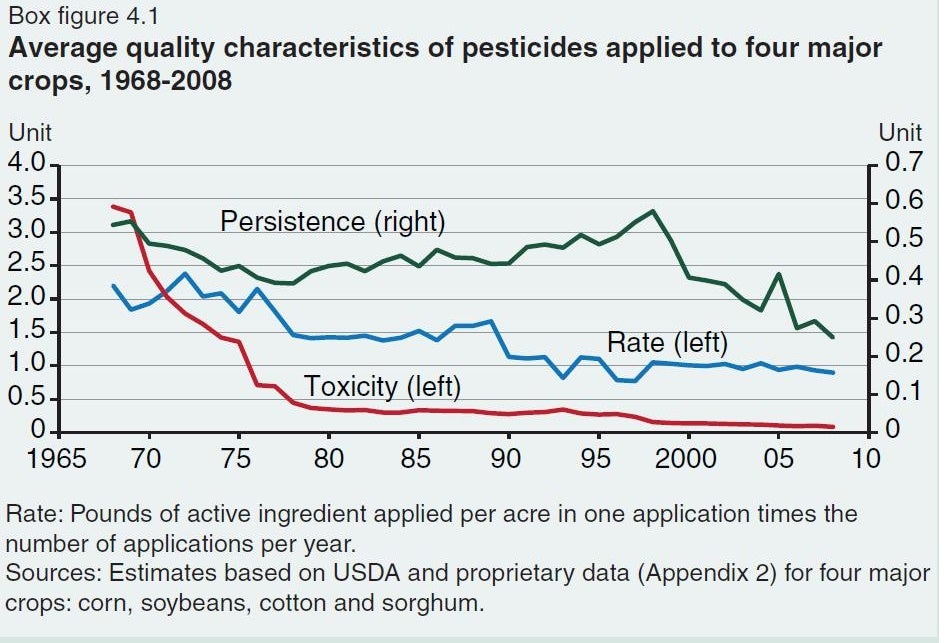
Although the docuseries repeatedly tried to imply glyphosate was absorbed by the body, in fact it is poorly absorbed from the digestive tract and is largely excreted unchanged by mammals. Cows, chickens, and pigs fed small amounts had undetectable levels (less than 0.05 ppm) in muscle tissue and fat. Levels in milk and eggs were also undetectable (less than 0.025 ppm). Glyphosate has no significant potential to accumulate in animal tissue.
So who cares if shows like GMO OMG and GMOs Revealed and the like demonize GMOs and glyphosate in the absence of any objective evidence? I do!, as both a mother and an agricultural scientist. Because fearmongering around other safe technologies – think vaccines, food irradiation and even pink slime – has real world consequences. And every time a safe technology gets taken off the shelf for no good reason and without a serious and honest discussion of the resulting tradeoffs or opportunity costs – agriculture becomes a little less sustainable, and that deleteriously impacts the future of all our kids.
Recent case studies conducted by researchers in Germany and the UK predict that losing glyphosate would have a considerable effect on crop production costs and would also have an impact on the international trade in several European winter crops and sugar. “However, the biggest changes in the event of a glyphosate ban are likely to relate to running costs, since many farmers will probably revert to ploughing for weed control. It is estimated that more ploughing and higher costs for machinery and labor would increase production costs for several crops by EUR 8 to EUR 30 per hectare in Germany. This means that even if yields remained stable, the farmers’ profit margin would drop by 7%.”
A recent paper by Oxford Economics examined the likely impact of a ban on glyphosate would have on UK farming – it suggested a decrease in yields of 12-14% in wheat and oilseed rape due to more weeds, and a decrease of 15-37% in the acreage of cereals, wheat and oilseed rape. And that is in a relatively small country that currently grows no Round-up ready GMO crops (although it does import a lot of GMO animal feed ironically in part due to the essential aromatic amino acids that are prevalent in soy-based feed).

Impact of a Glyphosate Ban on Farming in the UK
What these scary documentaries seem to be advocating for is a ban on both glyphosate and GMO crops. What might that look like? Well probably the opposite of the documented impacts of GMO crops on pesticide use and carbon emissions 1996-2015– facts and potential tradeoffs that are truly scary and are unfortunately never discussed in these documentaries.
“The adoption of GE insect resistant and herbicide tolerant technology has reduced GLOBAL pesticide spraying by 618.7 million kg (~8.1%) and, as a result, decreased the environmental impact associated with (less toxic) herbicide and insecticide use on these crops by 18.6%. The technology has also facilitated important cuts in fuel use and tillage changes, resulting in a significant reduction in the release of greenhouse gas emissions from the GM cropping area. In 2015, this was equivalent to removing 11.9 million cars from the roads.”
Even critics of glyphosate warn that banning it will lead to the use of chemical alternatives that are orders of magnitude more harmful, both in terms of environmental and human health risks.
So while the “worried wealthy” seem to be increasingly obsessed with avoiding undocumented risks in their food, ensuring the clean composition of their well-fed dog’s bowl, and acting to ultimately preclude farmer’s access to safe technology, what worries me is the impact that these fearmongering “documentaries” are ultimately going to have on what it appears are our shared values: decreasing the global environmental footprint of food production while cutting down on the use of harmful pesticides and carbon emissions for the future well-being of agriculture and the planet.

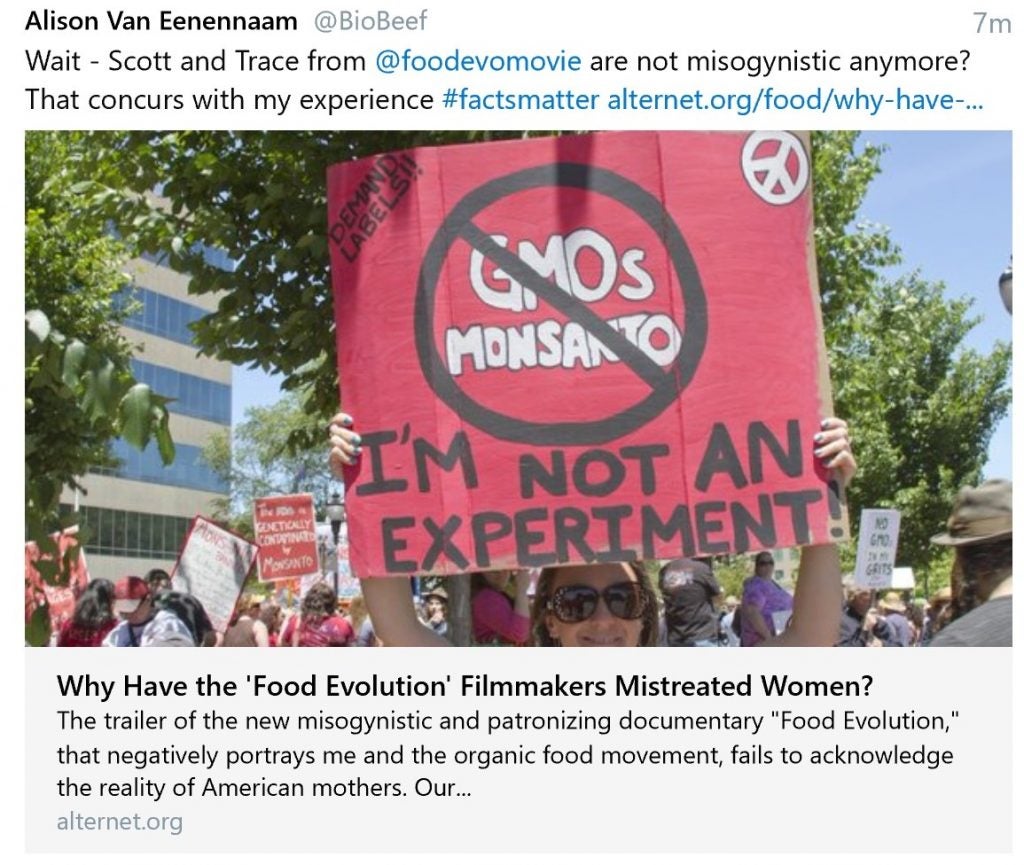
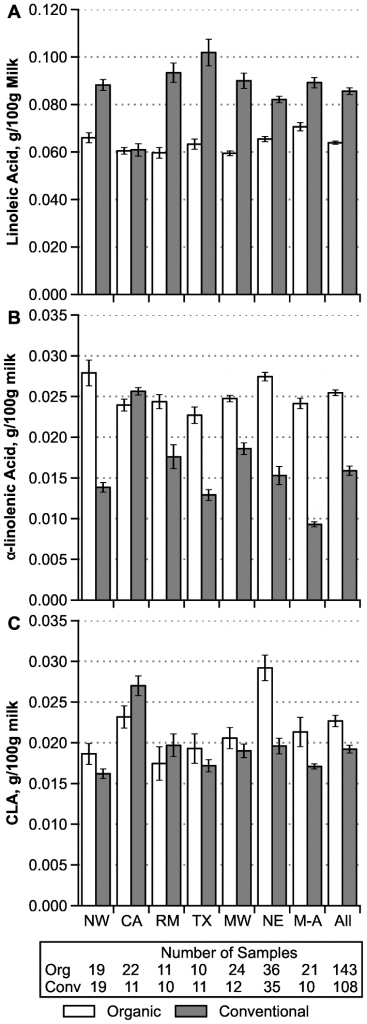

 Upon receiving an
Upon receiving an 